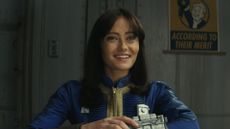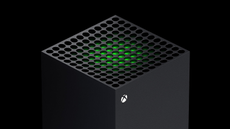Like a lot of other gamers I’ve got serious history with the Mass Effect series. I played all three games to completion when they originally came out and now, going on a decade since the final game in the trilogy came out, I was incredibly hyped to jump back into the world and experience the story and characters once more.
The thing is, though, if I was going to go back in time and revisit this classic series I wanted to do it right. Put simply, I wanted to play my Shepard, the Shepard that I’d spent hundreds of hours with all those years ago.
As ever with time, though, it continuously flows forward (at least perceptibly to us in our current understanding of it) and, well, it was well over 3,200 days since I’d last commanded the Normandy. My Natasha Shepard wasn’t just recent history, but now something very much consigned to a time that is now long gone and unreachable.
Or was it? Could I in fact directly rewind the clock back to 2012...

It started with me finding my near decade-old Mass Effect 3 save files hidden in a random buried data dump.
This was the question that had dominated my thinking for months now. Ever since I first heard that Mass Effect Legendary Edition was coming I had been filled with mixed emotions. On the one hand I was thrilled that the series was getting a loving remaster from the guys who had actually made the games all those years ago, but on the other I was staring down the barrel of the fact that if I went back into the world, there was a very real chance I would not able to team back up with my Shepard.
I’d spent hundreds of hours with Natasha Shepard, soldier, colonist and sole survivor of a terrible attack that had left considerable mental and physical scars, and I’d loved and lost along with her over the course of the epic three-game Mass Effect adventure. So the idea of having to roll a different Shepard didn’t fit right with me – I felt I would spend the entire game with another character trapped in my head.
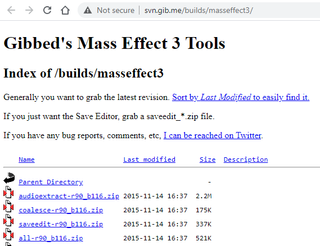
Of course, decade-old save files are useless in themselves. I needed I way to extract the data I needed.
There was also another problem. And it is encapsulated in one of my favorite quotes, “the past is a foreign country, they do things differently there”. I’d made Shepard originally back in the late 2000s and, well, I was a different person then. Had I remembered Mass Effect and, more importantly, the character I had created differently, or with some rose-tinted glasses? Would I regret decisions I made then now? Were the scant memories I had left accurate?
Because that’s the thing, when you don’t see someone for a long period of time, and you have no access to an image of them, your brain starts to lose details or fill them in from other sources. Memory is a deceptive, slippery thing, filled with white lies and half-truths. I hadn’t seen Natasha Shepard for almost a decade and, to be candid, while I’d remembered many of her heroic deeds, I’d forgotten how she looked.
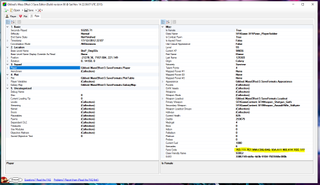
Gibbed's Mass Effect 3 editor allowed me to unearth my Shepard's character Face Code ID, which is highlighted.
I had a Road to Damascus moment, though, just a few days ago. A ghost of a memory in my mind triggered when I was doing something else entirely (isn’t that always the way!) – I’d got an external USB hard drive that I used to use years ago in my attic and something told me that I’d got Mass Effect save data on it. So, after much searching through boxes and old computing components I found the drive and accessed it.
There were all sorts of folders and files on the drive, and in no particular order (thanks past Rob!), but buried in a sub-sub-folder called “Dump” I found what that ghost memory had been trying to lead me to – I found a folder entitled “Mass Effect 3” and within it was save data. And, taking one look at the time stamps on what looked like save game files, I got very excited, as they showed dates ranging from March through to December 2012.

And punching in that long buried Face Code brought Natasha Shepard back from the dead in glorious fashion.
And, for those unaware, Mass Effect 3, the final game in the original trilogy, was released in March 2021.
This, on paper, tallied up perfectly. I’d thought I’d remember buying Mass Effect 3 on release, and these dates now seemed to confirm that.
But the thing is, though, this in itself was useless to me. Great, I’d found my original Mass Effect 3 save game files – but those wouldn’t work with Mass Effect Legendary Edition, and if I was going to revisit the world of Mass Effect I was going to do so right from the beginning in the original Mass Effect, not in the final game of the trilogy.
Put simply, I didn’t need these saves per se, but actually needed specific data locked within. Namely I needed the now famous “Face Code” identification number that the original games spat out for each character you created in the games’ character creation tools. This code was super important, as anyone who played through the original games will remember, it was how you ported your Shepard over from game to game. Basically, if I ever wanted to see Natasha again I needed to extract this face code.
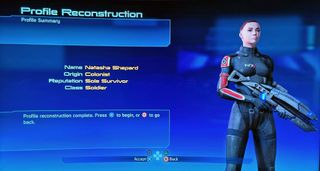
Say hello to Commander Natasha Shepard, soldier, colonist and sole survivor.
Save games in hand, then, my next thought was that I needed to install Mass Effect 3 on my PC once more, but the problem with that was that I had long ago sold the game. My plan was to install the game, copy over the save data to the install directory, load up the game and a save file and then grab the face code out of Natasha’s profile page on the squad’s team menu.
But with no game to use I was left with the far from ideal prospect of having to buy Mass Effect 3 again just to unlock Natasha Shepard’s face code, which I could then use to resurrect her in Mass Effect Legendary Edition, as the team had quite smartly kept the same character creation system for the remaster.
And that was when it dawned on me that I’d played the Mass Effect games on PC and surely someone must’ve made a save game editor back in the day. After all, there’s save game editors for almost all games on PC and I reckoned a game as popular as Mass Effect must’ve had a few.
My hunch was right, with just a little bit of digging online leading me to Gibbed’s Mass Effect Save Editor. So, with a huge hat tip to Mr Gibbed, I downloaded the editor and used it to open up one of my Mass Effect 3 save files. And, after a bit of digging through its menus, I found my ticket to travel back in time. Under the “Raw” menu tab, and then in “Squad” and then under “Player”, I found an entry called “Face Code”. And there it was, the 36 character ID string of numbers that Natasha had been made of all those years ago.
I wrote the code down and then, first thing Friday morning, which was Mass Effect Legendary Edition launch day, I booted up the remaster, which I had pre-loaded in the 24-hours previously before the game unlocked.
Despite having the code in my hand, though, I still had one last worry though. What if the Legendary Edition only had a box to input a face code in the remastered Mass Effect 2 and Mass Effect 3 games, and not in the original title. If that was true then all of this would be for naught and I’d be unable to resurrect Natasha for the full three-game story arc (thereby rendering it useless, as who wants to play one character for one game, and then swap to a different character for the next two?).

Bad-ass FemShep re-reporting for duty.
I also worried that the code from my PC save might not work on the PS5 version of the Legendary Edition for some reason, that maybe PC and console face codes were different in some way back in the past and that they absolutely wouldn’t work on this technically different title?
With my fingers crossed I booted up the remastered Mass Effect and then, after seeing that the first game still had an editable face code box intact in its character creation, slowly started typing in the digits. With the full code finally inserted, I made one last wish that nothing would go wrong and also that Natasha would be as cool as I’d remembered, and then I clicked confirm.
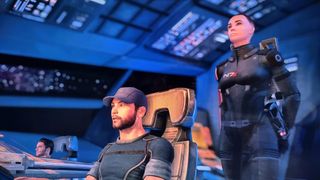
Reliving such an epic story with Natasha is going to be amazing.
And, there she was. Back from the dead. Resurrected. A time traveler who had managed to step over close to a decade without aging. And let me tell you, for me it was a small pinch of magic made real.
Suddenly all the details of her face and look that I’d forgotten crashed back into my mind in a huge wave, unlocking more memories and images from my original run. Natasha was back in her full glory and now, thanks to the Mass Effect Legendary Edition’s enhanced graphics, she looked more detailed and real than ever before.
So, chapeau to the Mass Effect guys, who made and have now remastered one of the best game trilogies of all time, and chapeau to my past self, who clearly for some borderline prophetic reason thought it was crucial that Natasha be saved and stored, as if in suspended animation, to reawaken and heed the call once more in the future.
So, yeah, watch out Saren, as Natasha Shepard is 100 per cent back in business.




